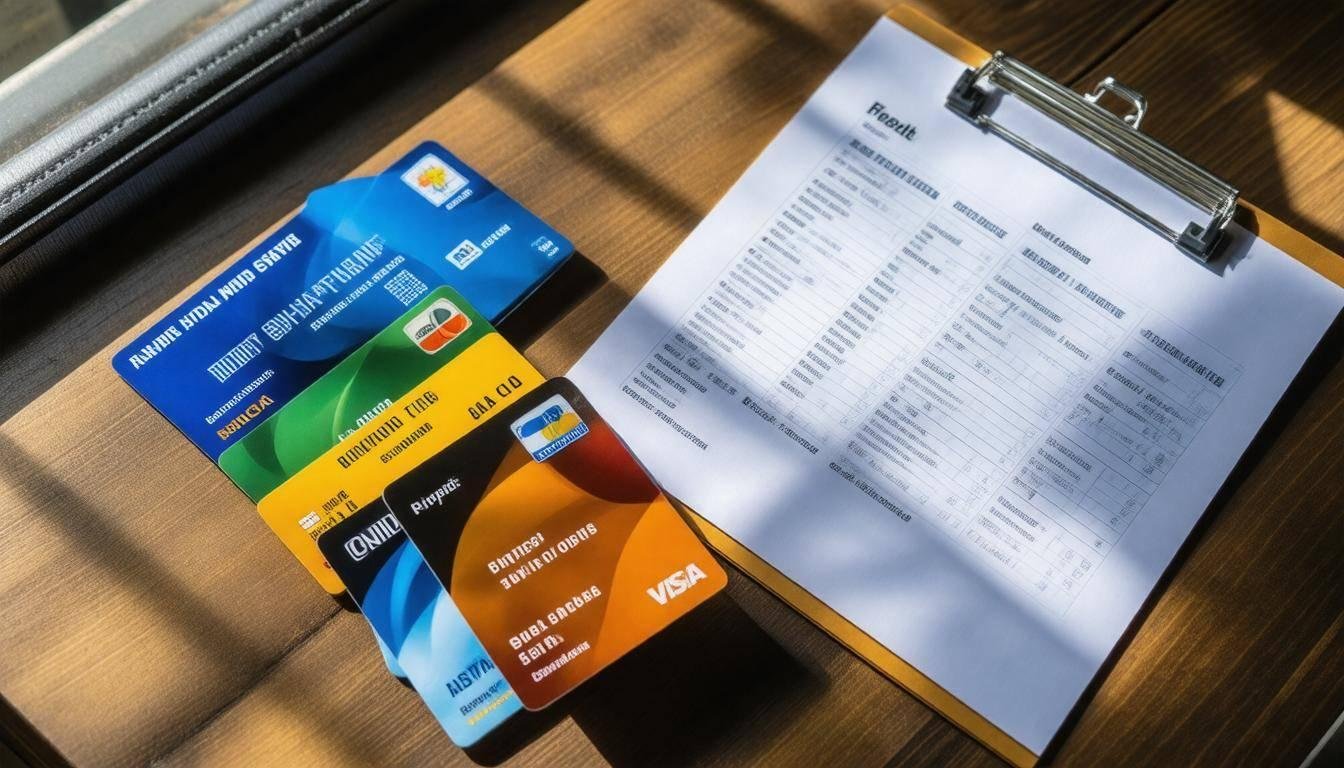
Comparison of Fuel Cards for Fleet Vehicles: Save on Costs and Maximize Benefits
When comparing fuel cards for fleet vehicles, consider factors such as accepted fueling station networks, discount and rebate offers, reporting capabilities, ease of use, and any associated fees. Additionally, evaluate the integration of fuel cards with fleet management applications to enhance operational efficiency and track spending effectively.
Key Features to Look For In A Fuel Card
One of the foremost aspects to consider when choosing a fuel card is the rebates and discounts offered. Fuel rebates essentially act as a partial refund on your fuel purchases, enabling you to save money over time. Cards like the WEX Fuel Card lead the pack by presenting discounts that can reach up to $1.85 per gallon on diesel. These substantial reductions mean that over a single route or series of trips, your savings can become immense. For instance, if you’re filling a 150-gallon tank regularly, those savings can easily translate into hundreds of dollars monthly. Meanwhile, other cards, like the Coast Fleet Card, may offer smaller but still valuable rebates of up to 10 cents per gallon at certain stations, which should not be overlooked depending on your route preferences.
As we explore deeper into fuel card options, another vital feature is their usability and network coverage. This aspect refers to where you can use the fuel card effectively without limitations or additional hassles. Cards such as the WEX Card boast an impressive acceptance rate—over 95% of U.S. gas stations—which makes it highly convenient for fleets traveling across various regions. Imagine having drivers stop at almost any station without worrying about whether they’ll be covered by their fuel card; this option enhances both flexibility and employee satisfaction.

Additional Considerations
Beyond rebates and usability, it’s important to think about additional features that may simplify operations for your fleet. Selecting fuel cards with built-in IFTA (International Fuel Tax Agreement) reporting capabilities can help make tax compliance a breeze. This feature automatically compiles fuel usage data to ensure accurate reporting—a significant time saver for fleet managers who handle multiple compliance requirements.
Furthermore, many modern fuel cards offer integration with fleet management applications. This integration allows you to view real-time data on fuel spending alongside other expenses, creating a holistic view of operational costs. By harnessing such insights, businesses can identify trends and inefficiencies in real-time, leading to smarter decisions about route planning and overall fuel budgeting.
These essential aspects not only influence cost savings significantly but also enhance operational effectiveness within your fleet management strategy. Now we can turn our focus towards examining some specific popular options available in this market.
Comparing Popular Fuel Cards
When it comes to selecting the right fuel card, understanding each option’s benefits and drawbacks can make a significant difference in managing your fleet. Take a closer look at some prominent players in the market to gain insights into their offerings and decide what will work best for you.
Alphabetical Comparison of Popular Cards
| Card Name | Discounts | Pros | Cons |
| AtoB Fuel Cards | Up to $1.85 per gallon on diesel | High discounts, available where Mastercard is accepted | Requires app usage, has setup fees |
| WEX Card | Accepted at 95% of gas stations | Real-time tracking, wide acceptance | High fees for unpaid balances |
| Coast Fleet Card | Save up to 10 cents per gallon | No setup or monthly fees | Limited to specific stations |
| Exxon Mobil Card | Up to 6 cents per gallon | Real-time alerts, accepted at Exxon/Mobil stations | Limited network, setup fees |
| Shell Card | Up to 6 cents per gallon | Usable at Jiffy Lube | Limited to Shell stations |
The AtoB Fuel Cards stand out with their impressive discounts of up to $1.85 per gallon on diesel, making them a viable choice for businesses looking to minimize their fuel expenses. However, users must be comfortable with app usage, have a fleet that predominantly uses diesel fuel and potential setup fees. Meanwhile, the WEX Card shines with its broad acceptance—95% of U.S. gas stations. This means less stress regarding where you can fill up but keep an eye on unpaid balance fees, which can accumulate if not managed properly.
On the other hand, less complicated options may appeal more directly to certain fleets.
The Coast Fleet Card offers savings of up to 10 cents per gallon without any setup or monthly fees, making it an attractive choice for small businesses just starting out. However, keep in mind that it’s limited to specific stations, which could potentially restrict convenience when traveling long distances. In contrast, if your team frequently utilizes Exxon or Mobil stations, consider their card which provides up to 6 cents per gallon alongside real-time alerts; however, be aware that this too has a setup fee and a limited network.
Lastly, for fleets regularly using Jiffy Lube services, the Shell Card grants up to 6 cents per gallon off, though like Exxon and Coast, it is mainly usable only at Shell stations.
Understanding these aspects allows you as a fleet owner or manager to align your operational demands with costs effectively and ultimately find the best fit among your fuel card options. As you navigate through these comparisons, consider how each card’s unique requirements complement your business’s existing procedures.
As you assess various options available on the market, it’s essential to analyze potential cost savings and how they contribute to overall efficiency within your fleet operations.

Cost and Savings Analysis
When choosing a fuel card, it’s important to analyze how costs and potential savings will impact your fleet’s bottom line. Comparing various fuel cards can illuminate significant differences in savings opportunities, which can make or break your budget. For example, the WEX Fuel Card stands out for its impressive rebate potential, which could save a fleet utilizing 10,000 gallons of diesel annually approximately $18,500. This substantial cost saving might be enough to justify making the switch if you’re currently using another card.
On the other hand, the Coast Fleet Card presents an interesting option as well. While it might not offer as generous rebates per gallon as WEX, it can provide substantial discounts at specific stations for fleets that regularly refuel at those locations. It’s akin to finding a favorite coffee shop that rewards you with a “buy one, get one free” offer; frequenting that location essentially stacks up savings over time. Understanding where your fleet typically fills up is essential. Weigh both options before making any decisions.
It’s also vital to keep in mind any fees associated with each card you’re considering. Fixed and variable fees can significantly affect your overall savings and should never be overlooked. For instance, with cards such as the WEX Card, unpaid balances may lead to high penalties that quickly erode benefits you may receive through fuel rebates. It’s like having a credit card with high-interest rates—savings from one area can easily be consumed by costs in another.
Evaluating Total Cost of Ownership
The total cost of ownership (TCO) is an important concept when analyzing fuel cards that goes beyond just fuel costs and rebates; it includes all associated expenses and charges. Make it a point to break down these elements into comprehensible figures. Think about transaction fees, administrative overhead for managing accounts, and any costs incurred due to technology incompatibility.
As you investigate this analysis, aim to create a spreadsheet listing all the costs associated with each potential card while keeping track of potential savings too. Such a method helps clarify which card truly offers the best value over time rather than just short-term gains. Scrutinizing everything from bills to convenience factors of available stations where discounts apply paves the way toward maximizing your fleet’s budget—after all, every dollar counts.
Taking all these considerations into account allows you to make informed choices regarding fuel cards that suit your fleet’s unique needs best, leading to enhanced financial management in operations ahead.
Security and Control Features
As a fleet manager, maintaining control over fuel expenses and securing transactions isn’t just a priority; it’s an essential aspect of effective fleet management. Today’s fuel cards are equipped with advanced security features that help mitigate risks associated with unauthorized transactions while also providing the control you need over spending. Understanding these features can empower you to make informed decisions about which card best meets your operational needs.
PIN-enabled Transactions
One standout feature in modern fuel cards is PIN-enabled transactions. These cards, often utilizing smartchip technology, offer enhanced security against potential fraud. Think of them as the equivalent of ATM cards but specifically tailored for fuel purchases. By requiring a Personal Identification Number (PIN) for each transaction, you create a robust line of defense against unauthorized users who may attempt to access your resources.
Beyond just offering a simple layer of protection, these cards allow fleet managers to take charge of how funds are allocated. With additional settings available, you can easily impose restrictions on specific types of purchases—like limiting certain card use to only fuel or maintenance supplies. Even more beneficial is the ability to set daily spending limits and cap the number of transactions per day. Imagine controlling how much fuel each vehicle can consume without needing to monitor every pump or finger-point discrepancies.
Real-Time Alerts
Likewise, real-time alerts are another critical feature in many fuel management systems today. For instance, the Exxon Mobil Card comes equipped with this functionality, instantly notifying fleet managers whenever fuel purchases are made. This proactive communication significantly aids in tracking expenses and acts as an early warning system agaist unauthorized usage.
Knowing that you’re receiving instant alerts allows fleet managers to react swiftly to suspicious activity. It creates an environment of accountability among drivers who know their purchases are being scrutinized in real time. Additionally, having access to this data can provide deeper insights into fueling patterns and behaviors across your fleet, giving you a chance to address any irregularities before they escalate into larger issues.




